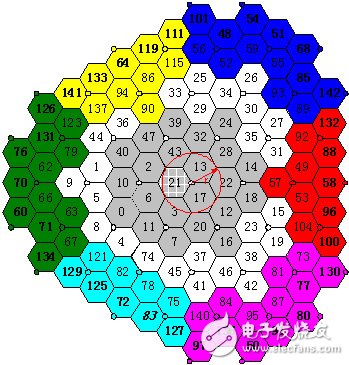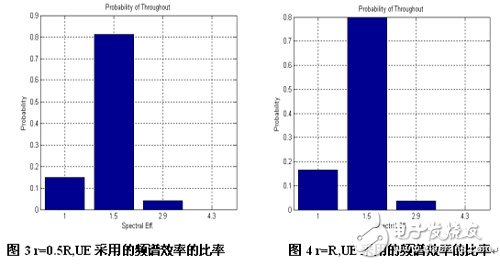High Speed ​​Downlink Package Access (HSDPA) is a very important enhancement technology in the third generation of mobile communication. It is especially suitable for multimedia downloading services such as multimedia, remote conference and Internet. HSDPA is proposed in the R5 protocol to meet the requirements of uplink/downlink data service asymmetry. It can increase the downlink data service rate to 10 Mb/s without changing the already constructed WCDMA network structure. This technology is an important technology to improve the downlink capacity and data service rate in the later stage of WCDMA network construction. In order to improve the downlink packet data rate and reduce the delay, HSDPA mainly adopts technologies such as adaptive coding and modulation (AMC adapTIve modulaTIon and coding), hybrid automatic retransmission (HARQ Hybrid ARQ) and fast packet scheduling. In fact, the above three technologies belong to the link adaptation technology, and can also be regarded as further improvement of the variable spread spectrum technology and the power control technology in the WCDMA technology.
Since we focus on capacity analysis and inter-system interference analysis in system level simulation, we use a static system level simulation method. First, we will simulate the single system of WCDMA and HSDPA separately to obtain the system capacity of WCDMA independent operation and the data throughput when the HSDPA system runs independently. Then we run a two-system simulation to study the mutual interference of the two systems coexisting and the system capacity and throughput at the time of coexistence. Both single system and dual system simulations are performed in a macrocell environment. The established system model and its parameters refer to protocols such as TR25.950, 25.848, 25.996, 25.942, and UMTS30.03 in the 3GPP specifications.
2 System ModelingStatic system simulation can simulate both a single wireless network environment and multiple mobile networks. The Monte Carlo statistical method is mainly used, and the system generates users randomly distributed in a certain geographical area, and then keeps these user positions fixed, and performs switching and power control. Below we illustrate the system modeling method from five aspects: cell topology, channel model, handover, power control and so on.
2.1 Cell Topology
The network topology is a macro cell, each cell adopts 3 sectors, adopts 48 sectors/16 cell structures, the sector radius is 577 meters, and the cell radius is 1000 meters, as shown in FIG. In the case of adjacent sector interference, only the interference of all the sectors of the adjacent first layer base station and the main direction of the second layer base station are considered, and the interference of other sectors is ignored. This is also a simulation based on the actual situation.

Figure 1 Macro cellular network structure using Wrap technology
2.2 Channel Modeling
For the calculation of path loss, we choose the vehicle propagation model. The vehicle propagation model is mainly applied to the case where one antenna is higher than the average roof height and the other antenna is lower than the average roof height. The propagation model calculation formula is:
L=40&TImes;(1-4&TImes;10-3×hb)lg(d)-18lg(hb)+21lg(fc)+80+LogF(1)
Where d is the separation distance (km), fc is the carrier frequency (MHz), hb is the base station antenna height (m), based on the average roof height, LogF is a log-normal distribution with a standard deviation of 10 dB. This model is suitable for situations where the distance between urban or suburban links is from a few hundred meters to several kilometers.
In addition to path loss, the propagation loss between the user and the base station includes shadow fading and fast fading. Because the fast decay changes quickly, it has little effect on the average performance of the system, so static simulation generally does not consider the impact of fast fading on the system. Shadow fading is usually simulated using a randomly distributed random variable, and the shadow fading between each user and each sector is independent of each other. The standard deviation of the shadow fading in this paper is 8dB.
2.3 switching
The handover of WCDMA is soft handover, and the handover of HSDPA is hard handover. In this simulation, HSDPA switching has the following characteristics:
(1) Each capture of each sector has a maximum of one user at a time. Because static simulation cannot contain the concept of time.
(2) Assume that based on the maxC/I scheduling principle, only the signal-to-noise ratio is currently being served.
2.4 power control
Power control for WCDMA without power control for HSDPA.
3 simulation mechanismThe Monte Carlo method is a method of counting the statistical properties of a random variable or a stochastic process based on the sampling result by independently sampling the random variable or the stochastic process. The basic process of the entire simulation system is composed of Snapshot. With the Monte Carlo simulation method, after a sufficient number of Snapshot processes (104 for voice services and 105 for data services), we can get statistics on system capacity.
We assume that WCDMA and HSDPA systems are co-located, and the total power can be divided into three parts: common channel, WCDMA user, HSDPA user. The specific simulation process is as follows:
(1) Enter the necessary system initialization parameters and requirements;
(2) For a single system simulation, given a predefined single system capacity value Nsingle, Nsingle is the sum of the number of users in all sectors within the system; for HSDPA systems, Nsingle = 48.
(3) According to this predefined single system capacity value, start a simulation, including a large number of Snapshots, such as 104 voice services and 105 data services. In each Snapshot process, perform the following operations:
a) First, Nsingle users are allocated to each sector in a uniformly distributed manner, and then the positions of the respective users are randomly generated in each sector;
b) calculating the path loss of the link between the mobile station and the base station/sector that may be communicated, and adding the shadow fading of the lognormal distribution
c) selecting the sector to which the link with the best communication quality belongs as the logical home sector of the mobile station;
d) initializing the transmission power, the received power and the interference power corresponding to all links, and the total transmission or total received power of the base station;
e) simultaneously performing power control on all mobile stations, and each step of the power control updates the corresponding received power and interference power according to the transmitted power of the link after the change;
f) After exiting the power control loop, the carrier-to-interference ratio of each link is counted, the state of the mobile station is updated, and the total interference power or the number of Outage/Satisfied users is recorded according to the 6dB noise raising criterion or the 5% criterion;
(4) The Snapshot process in step (4) above is repeated. According to the uplink and downlink capacity criteria, it is determined whether the system capacity Nsingle is satisfied. If the criterion is met, then (5), otherwise increase or decrease Nsingle, turn (3) ) The simulation process restarted.
(5) For another system, repeat the process of (3), (4) until the system capacity of the two single systems is obtained;
(6) For dual system simulation, given two predefined or calculated single system capacity values: start a simulation, which includes a sufficient number of Snapshots;
(7) Join the interference system for simulation, and perform the operation of step (3) according to the single system capacity value;
(8) Analysis based on the results of the dual system simulation.
4 simulation resultsThe basic parameter settings are shown in Table 1:
Table 1 Simulation basic parameter settings

Analysis of simulation results: In the WCDMA single system simulation, the uplink is based on the 6dB lifting criterion, and the number of users is 1298. According to the 5% overflow rate criterion, the number of users is 2400.
In HSDPA single-system simulation, throughput is used as an indicator to evaluate HSDPA performance and is only used to evaluate downstream traffic. The average cellular throughput of the macro cellular environment derived from the simulation is approximately 16 Mbps.
In the dual-system simulation, we added HSDPA users to the WCDMA system, and then re-adjusted the number of WCDMA users according to the 5% criterion, and recalculated the average throughput of HSDPA and the capacity loss of WCDMA. Figure 2 is a simulation result of dual system simulation showing the correspondence between HSDPA throughput and capacity loss of WCDMA system. It can be seen that in the case of dual system coexistence, when the capacity loss of the WCDMA system is about 30%, we can get a satisfactory result. When the capacity loss of the WCDMA system is between 30% and 50%, the HSDPA throughput growth is slow, which is not worth the loss. When the capacity loss of the WCDMA system exceeds 50% (unacceptable for the W system), the HSDPA throughput increases rapidly.

Figure 2 Relationship between macrocell capacity loss and HSDPA throughput
Figure 3 and Figure 4 show the HSDPA throughput for different HSDPA cell radius r cases with a W user of 560, 3 km/h. The X-axis represents the spectrum utilization of different modulation methods. 1 and 1.5 are the spectrum utilization of QPSK modulation, 2.9 is 16QAM modulation, and 4.3 is 64QAM. It can be concluded from the figure that QPSK is the most important modulation method in the simulation, which is similar to the actual environment.
When the HSDPA cell radius r becomes half of the original 0.5R, but the station address is unchanged, it is equivalent to the mobile station's distance from the HSDPA base station "0.5R", and the H system is not accessed. At this time, compared with r=R, the modulation mode of 16QAM is obviously increased, and obviously the throughput is improved. Taking this strategy will get better results. This shows that the HSDPA system is more suitable for covering areas with smaller radius, such as for microcellular or hybrid cellular systems.

Energy 5000 Puffs,Rechargeable Vape 5000 Puffs,Energy Drink Disposable Vape,Energy 5000Puffs Disposable Vape
Nanning Nuoxin Technology Co., LTD , https://www.nx-vapes.com
